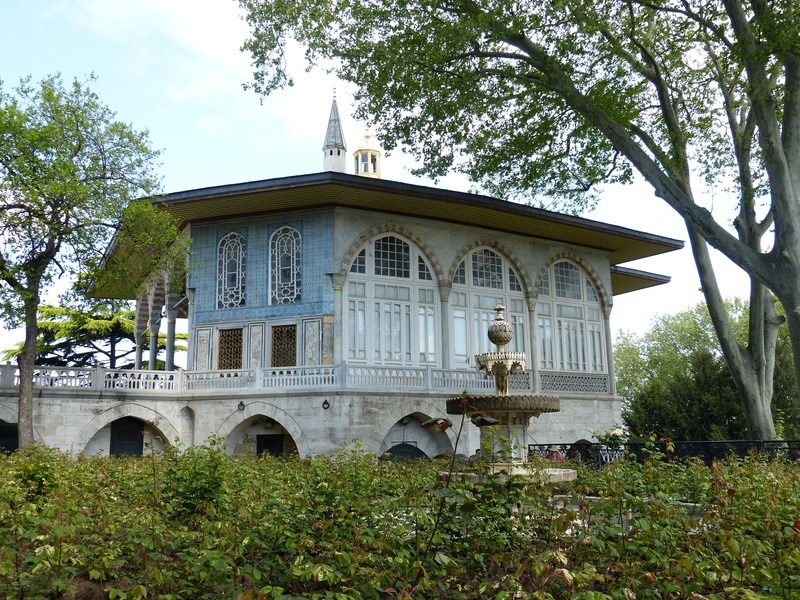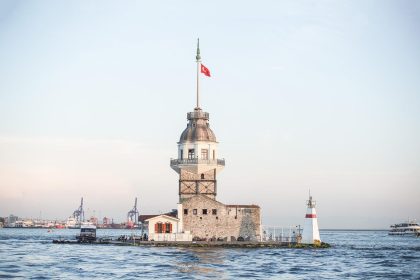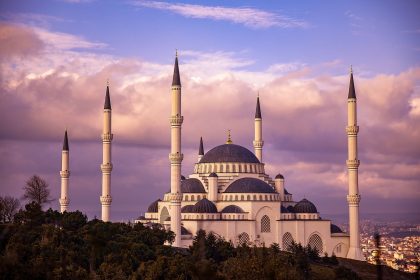The Hagia Sophia (Aya Sofya) is considered one of the most important sites in the city. In fact, this spectacular old building has a rich historical past. This iconic structure is an Orthodox basilica that later became a mosque and now serves as an important museum in the city. One of the most remarkable features of this church is its large dome. In fact, Hagia Sophia (Aya Sofya) was considered for many years as the largest cathedral before the construction of the Seville Cathedral in 1520.
History
In 325, on the site where there were once pagan temples, Constantine built the first basilica, which he dedicated not to a saint named Sophia, but to the Divine Sophia. In 404 it was burned down in a siege, rebuilt by Theodosius II in 415, but burned down again in the siege of Nicaea in 532 under Justinian, who is credited with the present construction.
Justinian wanted this church to be the most magnificent building ever constructed. He therefore gathered the most precious materials and the finest marbles from all the provinces of the empire (Ephesus, Athens, Rome, etc.). The work was carried out by two Greek architects, Anthemios of Trallies and Isidoros of Miletus. The building was completed in 548. After a triumphal march on the Hippodrome, Justinian entered the basilica and anchored it: “Praise God, my illustrious one, who made this work. Nineveh, Solomon!” The entire structure was built in 6 years – an extremely short time.
The façade of the basilica faced west. In the atrium, Justinian had built a marble cistern on which was inscribed the famous Carcino inscription NIPSON ANOHMATA MUNAN OPSIN. The interior of Hagia Sophia, although stripped of its grandiose decoration, still evokes a transcendent feeling of light and immensity. Its huge dome, considered an engineering marvel, seems to hang in the sky. On May 29, 1453, the same night that Constantinople was under siege, Mohammed the Conqueror entered Hagia Sophia and ordered that this cornerstone of Orthodoxy be transformed into a mosque. All the symbols of Christianity (icons, mosaics, etc.) were covered with lime and Muslim motifs were painted on.
For almost 500 years, the temple functioned as a Muslim mosque.
Video
After the conquest of Constantinople in 1453 by the Ottoman Empire, Sultan Mehmen II saw the church and fell in love with it at first sight. That’s why the church was transformed into a mosque. Several features such as the beautiful bells, the high altar and the spectacular vessels were removed and new Islamic features were added instead. Some of the new Islamic features include the minbar, minarets and mihrab, to name a few.
In 1931, the church that had been transformed into a stunning mosque was closed for restoration. Four years later, it opened as a museum in 1935 thanks to an initiative of the Turkish government.
In 2020, it will become a mosque again.
Tombs of the sultans
After finishing your visit to Hagia Sophia, I also suggest you visit the tombs of the sultans in the temple courtyard. These are the three cylindrical buildings in front of Hagia Sophia.
The entrance to the tombs is from the side, on the road leading to Topkapi. The part of the courtyard with the tombs is fenced off so that there is no access to the rest of the Agia Sophia complex.
How to get there
Opening hours: 9 am to 5 pm in winter and 9 am to 7 pm in summer.
Ticket price: 40 TL (3 €)
Sultan Ahmet, Ayasofya Meydanı No:1, 34122 Fatih/İstanbul, Turkey
https://goo.gl/maps/EvJMEwgXdUctWD3w7





